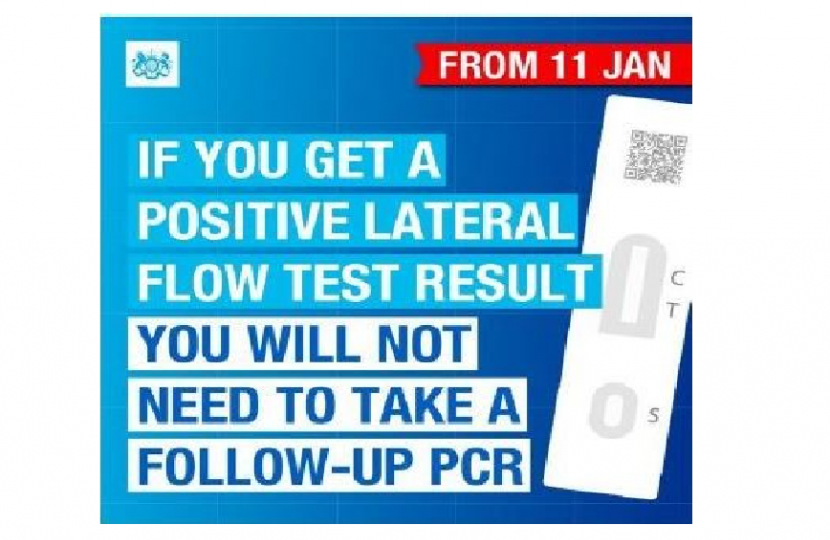
From Tuesday 11 January in England, people who receive positive lateral flow device (LFD) test results for coronavirus (COVID-19) will be required to self-isolate immediately and won’t be required to take a confirmatory PCR test.
This is a temporary measure while COVID-19 rates remain high across the UK. Whilst levels of COVID-19 are high, the vast majority of people with positive LFD results can be confident that they have COVID-19.
Lateral flow tests are taken by people who do not have COVID-19 symptoms. Anyone who develops 1 of the 3 main COVID-19 symptoms should stay at home and self-isolate and take a PCR test. They must self-isolate if they get a positive test result, even if they have had a recent negative lateral flow test – these rules have not changed.
Richard Fuller MP said:
Covid-19 cases remain high across the UK and we know Lateral Flow tests produce accurate results, so we must ensure that our resources are used as efficiently as possible.
That is why the government has removed the requirement to take a confirmatory PCR test following a positive Lateral Flow test – those testing positive now only need to self-isolate and are able to leave self-isolation after seven days, as long as they test negative on days six and seven.
These changes will ensure that PCR tests can be targeted and used as efficiently as possible, helping to reduce the spread of Covid-19.
Under this new approach, anyone who receives a positive LFD test result should report their result on GOV.UK and must self-isolate immediately but will not need to take a follow-up PCR test. After reporting a positive LFD test result, they will be contacted by NHS Test and Trace so that their contacts can be traced and must continue to self-isolate.
There are a few exceptions to this revised approach.
First, people who are eligible for the £500 Test and Trace Support Payment (TTSP) will still be asked to take a confirmatory PCR if they receive a positive LFD result, to enable them to access financial support.
Second, people participating in research or surveillance programmes may still be asked to take a follow-up PCR test, according to the research or surveillance protocol.
Finally, around one million people in England who are at particular risk of becoming seriously ill from COVID-19 have been identified by the NHS as being potentially eligible for new treatments. They will be receiving a PCR test kit at home by mid-January to use if they develop symptoms or if they get a positive LFD result, as they may be eligible for new treatments if they receive a positive PCR result. This group should use these priority PCR tests when they have symptoms as it will enable prioritised laboratory handling.
In line with the reduced self-isolation approach announced on 22 December, anyone who tests positive will be able to leave self-isolation 7 days after the date of their initial positive test if they receive 2 negative LFD results, 24 hours apart, on days 6 and 7.
Rapid lateral flow tests are most useful at identifying COVID-19 in people without any symptoms.

